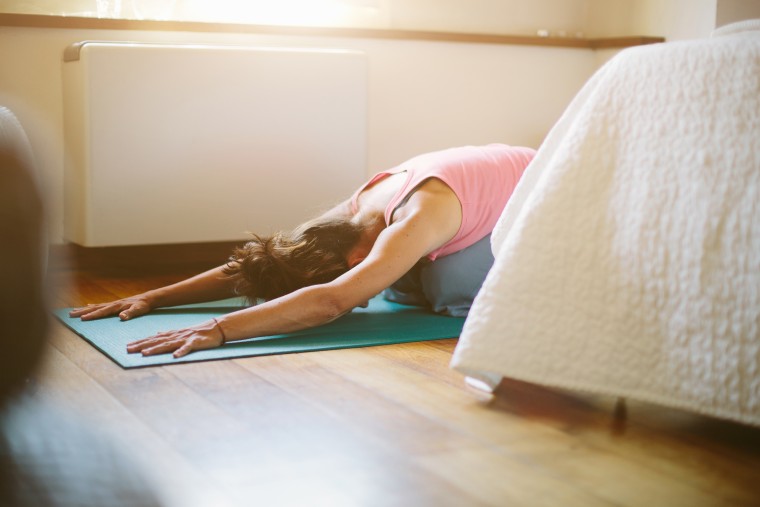You put away your phone and shut off the TV. You close down the kitchen two hours before bed. You’ve invested in comfortable sheets, keep your bedroom cool, and even have curtains that block out the light. And yet, you still have a hard time falling asleep each night.
Even if you don’t have difficulty falling asleep, we've all had those nights spent tossing and turning (that leave you feeling like a walking zombie the next day). And for many, stress is at least partly to blame.
This yoga sequence is designed to calm your nervous system, quiet your mind and create some “me” time to help you wind down before bed. As a certified yoga instructor, I perform these poses when I have a hard time falling asleep, and I recommend them to my clients, too. And Dr. Kenneth Lee, Assistant Professor of Sleep Medicine and Neurology at the University of Chicago Medical Center, agrees: “Practicing yoga techniques regularly has been shown to improve overall sleep quality,” he says. “ Moreover, the added benefits of being a stress reducer also indirectly aids in sleep quality.” Dr. Lee says that in addition to yoga helping to increase flexibility, it also aids in muscle relaxation, which is important for sleep health.
So whether you want to improve your quality of sleep, fall asleep faster, or are looking for techniques to help you de-stress, these soothing yoga moves (that you can do in your bed or on a yoga mat!) can help. This routine can be repeated nightly or done on a case by case basis.
Seated Forward Fold
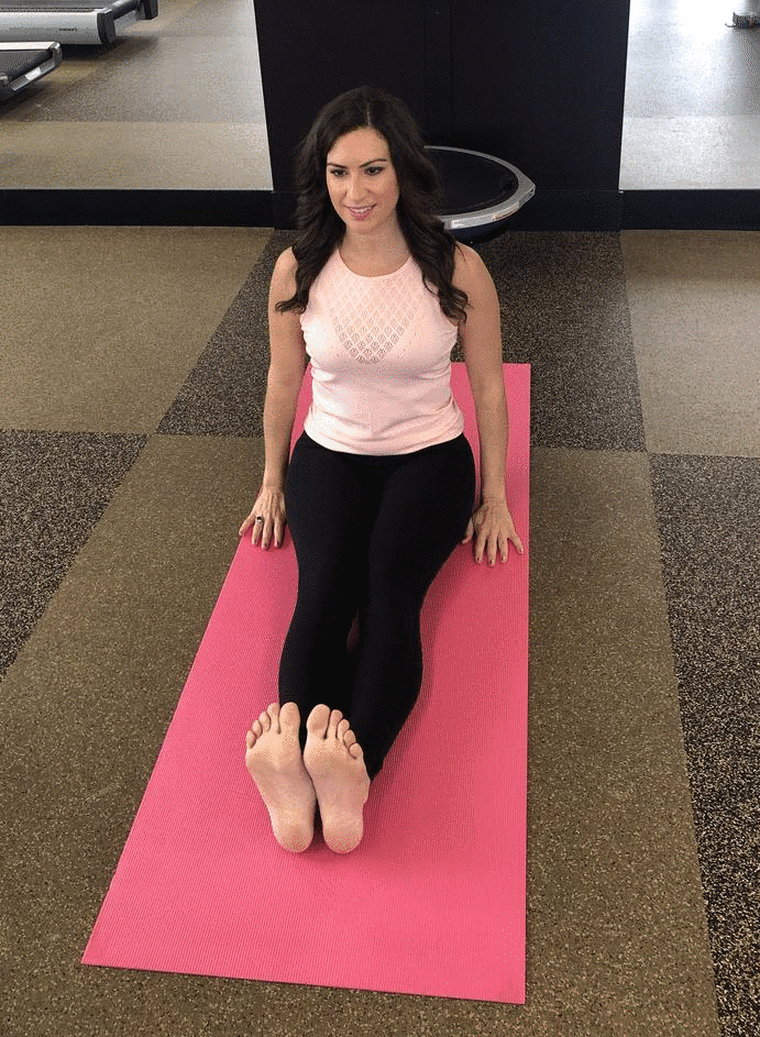
Sitting up tall with your legs out in front of you, pull your naval in towards your spine and slowly bend forward at your waist. Reach your arms in front of you and drop your chin towards your chest. Hold for a few slow, deep breaths, and then release. Forward folds help stretch the back of the body including the backs of the legs and the upper body. By increasing flexibility in your back and your hamstrings, you’ll aid in the relaxation of those muscles, according to Lee. That’s one reason why this pose is so beneficial to do before bed.
Bound Angle Pose (Baddha Konasana)

Sit upright and bring the bottoms of your feet together with your knees open to the sides. Slowly hinge forward at your hips and lean forward until you feel a stretch in the inner thighs and/or outer hips. Hold for a few slow, deep breaths. The hips and groin are often tight on the body, so loosening these up before bed can help reduce tension and relax your muscles.
Reclined Pigeon
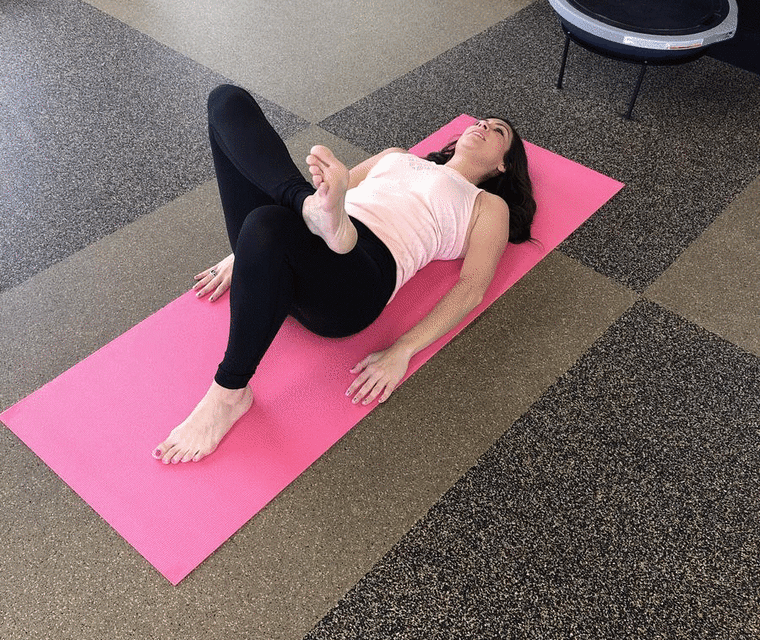
Lying on your back, bend your knees with your feet flat on the ground. Cross your right ankle over your left knee, and then thread your arms through the legs, holding on to the left hamstring and pulling the legs closer towards you. Be sure to flex your right foot to protect the right knee and stretch the right glute. Hold for a few breaths, and then release.
Child’s Pose
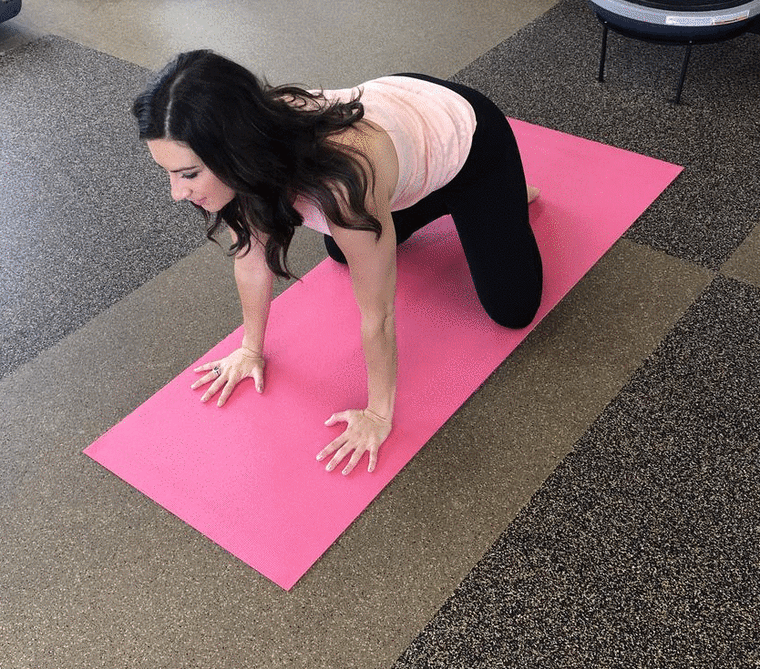
Come onto your hands and knees, and open the knees wider than the hips. Gently shift back so that your butt is reaching towards your heels. Extend the arms out in front of you, and rest the forehead on the ground. Breathe slowly for 5 deep breaths.
Legs Up the Wall Pose (Viparita Karani)
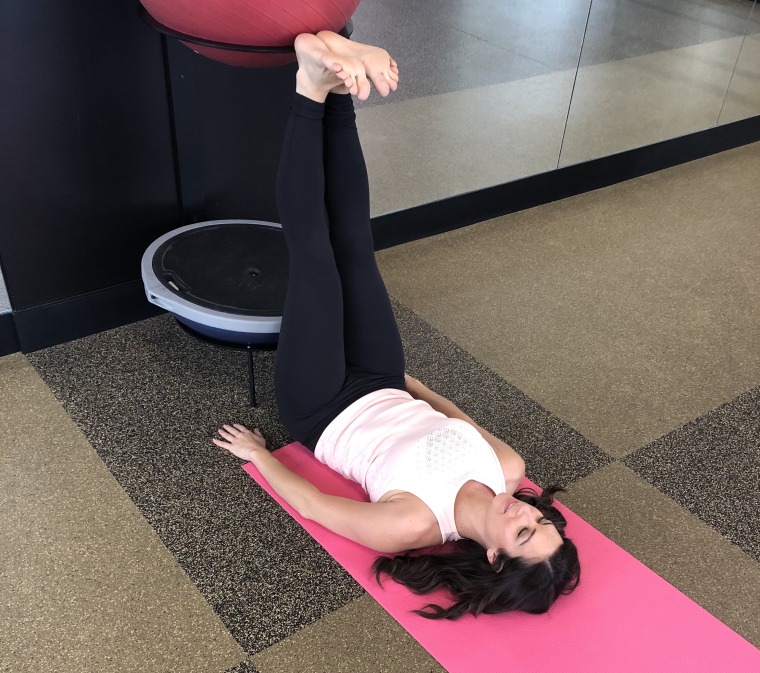
This pose can be done against a wall or even while lying in bed without the support of a wall. Simply reach the legs up towards the ceiling while keeping your low back on the ground. With the legs above the head, you’ll allow the nervous system to calm down and increase blood flow and circulation. Stay here for a few minutes, breathing deeply.
Alternate Nostril Breathing
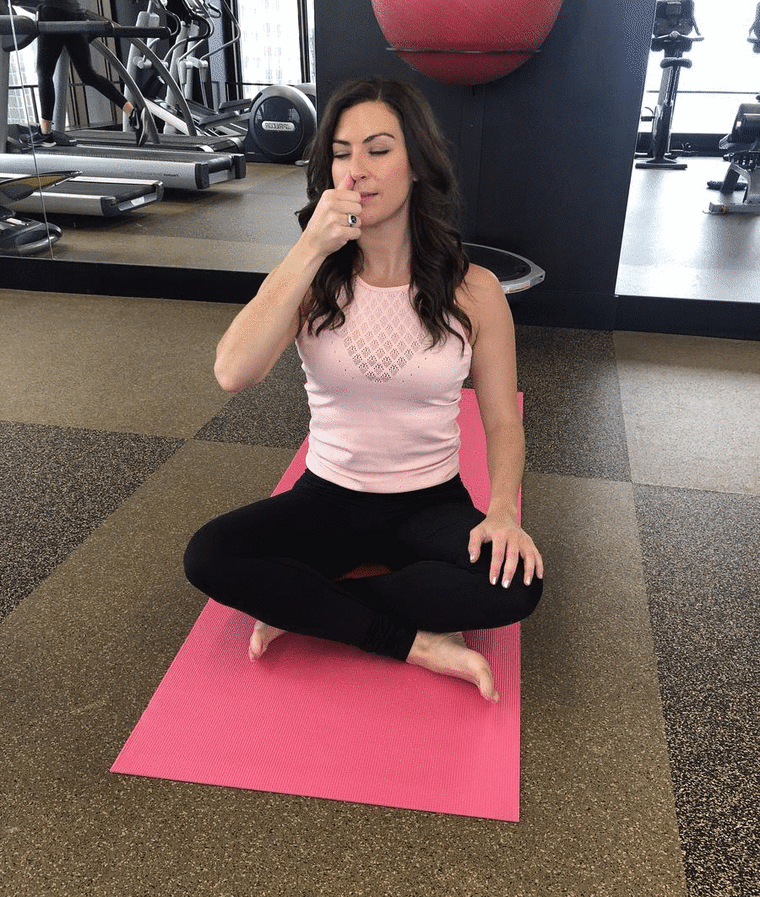
Sitting or lying down, use your right thumb to plug your right nostril. Breathe in through your left nostril, and then use your right pointer finger to plug your left nostril. Breathe out through your right nostril. Then, breathe in through your right nostril. Plug your right nostril and breathe out through your left. Repeat for 10 slow, deep breaths. Lee says, “Techniques such as alternate nostril breathing can calm the mind and keep one focused.” The mindfulness required to maintain this alternate nostril breathing is similar to the focus needed in meditation which helps to quiet and calm the mind, and combat stress hormones that can keep us awake at night.
TRY THESE FITNESS ROUTINES
- A 31-day abdominal workout plan for summer — no crunches required
- A one-month resistance band workout you can do anywhere
- A 30-day strength training routine — no equipment required
- A 15-minute full body HIIT workout — no equipment required
- Get in shape for summer with this 30-day walk/run interval training plan (no gym required)
Want more tips like these? NBC News BETTER is obsessed with finding easier, healthier and smarter ways to live. Sign up for our newsletter and follow us on Facebook, Twitter and Instagram.
